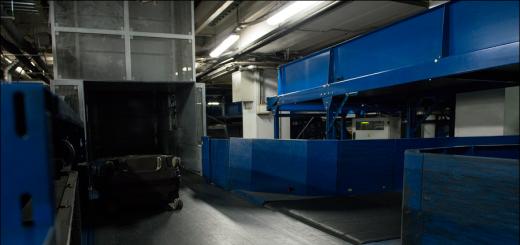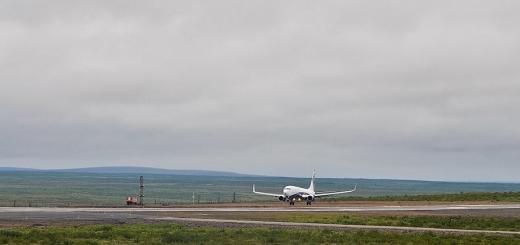The Pyramid of Cheops is one of the seven wonders of the world and the only one that has survived to this day. Cheops is the ancient Greek name of the Egyptian pharaoh, for whom the pyramid was erected as a tomb. in 2580 BC. The ancient Egyptian name for this pharaoh was Chufu. The pyramid is called Akhet-Khufu" which means "Horizon of Khufu". Became an architect Hemiun who was the nephew of Cheops. Construction took twenty years.
Location of the pyramid of Cheops
The first of the seven wonders of the world located southwest of Cairo, the capital of Egypt. The Pyramid of Cheops is one of the pyramids of the Giza Necropolis. Giza is a rocky plateau on which during IV dynasty built a large necropolis. The structure of the necropolis included several cemeteries, rock tombs, temples, a village of builders and Sphinx. The three great pyramids of Giza are worn names of pharaohsCheops, Khafre and Menkaure.
Description and dimensions
The pyramid has a square base. The sides of the pyramid were originally 230 meters and the height 150 meters. Currently, due to erosion, the size of the pyramid has slightly decreased. This pyramid is the largest of all the pyramids ever built on Earth, regardless of civilization and time. The total weight of the Cheops pyramid is estimated at about 6.25 million tons. The burial chamber is located below ground level and leads to it. 105 meter inclined corridor. Chamber size 14*8.1 meters, height 3.5 meters.
Construction work and materials
The stones of the Cheops pyramid are composed of basalt, limestone or granite. They were originally covered with a top layer of polished Tura limestone, which, however, for the most part has not survived to this day. The pyramid is built from cuboid stone blocks of various sizes, each of which weighs an average of 2.5 tons. In total, to create such an impressive structure, it took near2.3 million stone blocks. The work was carried out without any complicated mechanisms.
Inside, the pyramid is very different from its sister pyramids at Giza, as well as from other pyramids in Egypt. P Iramid of Cheops is the only pyramid with three burial chambers. In addition, this Egyptian pyramid has ventilation duct around which many myths have formed.
Side concavity
The pyramid has four sides that look perfectly straight, but in fact each of them is divided from top to bottom into two equal parts. Therefore, the pyramid of Cheops has eight sides. But this feature is very weakly expressed and is visible only at a time when the sun's rays illuminate both sides from the north and south. At these moments it can be seen that these one half of the side of the pyramid is in the shade, and the other in the sun.
Today the pyramid of Cheops is included in UNESCO heritage list and attracts the attention of tourists and archaeologists from all over the world. It is still fraught with a lot of secrets and mysteries. There are narrow tunnels inside the pyramid, the purpose of which is still unknown..
Of course, everyone knows where the Cheops pyramid is located. After all, this is one of the most outstanding monuments not only of Egypt, but of the entire planet. And despite the achievements of modern science, the secrets of the pyramid of Cheops are still unsolved. This is one of the reasons why this huge structure attracts many tourists, as well as the fact that it is the only wonder of the world that has survived to this day.
This place really has some special magnetism. And even numerous souvenir sellers and camel drivers who want to make money on curious tourists do not spoil the overall impression. Looking ahead, I will say that the Cheops pyramid inside is not as amazing as the outside. And if you decide to save on the "internal" tour, you will not lose much. Moreover, I would not recommend going inside for people with claustrophobia, breathing problems or heart problems. The corridors here are quite narrow, and the air is heavy and stuffy, despite the presence of ventilation ducts. By the way, sightseeing tours are often very rich and do not provide time to get acquainted with the pyramidal structures inside. Therefore, be sure to clarify this point in advance, if you still decide to get in touch with the secret from withinJ
Construction history
The most famous pyramidal structure owes its “birth” to Pharaoh Khufu, who ruled Egypt for at least 27 years. According to legend, a huge amount of money was spent on the creation of this great monument, which led to the weakening of the state. Scientists do not yet have a consensus on how this is true. But it is clear that a lot of resources have been expended. After all, the original height of the pyramid of Cheops is 146.6 meters. But what is remarkable, it looks somewhat lower than the neighboring building. And not only because she “lost” the top. The son of Cheops, building his pyramid, cheated a little by choosing a place 10 meters higher.
There are many versions of how the Cheops pyramid was built, consisting of 2.3 million stone blocks. Their total weight is approximately 6.5 million tons. Stone blocks are carefully fitted to each other and fastened with a special composition - pink gypsum "milk". The walls are sloped at 52 degrees and embody the number pi. This giant is located on an area of 5 hectares. The scheme of the Cheops pyramid clearly demonstrates that inside it is practically a monolith, in which there are only a few corridors, halls and ventilation ducts. To avoid plunder, the ancient Egyptians placed special mechanisms inside. But the traps of the Cheops pyramid, religious prohibitions and other tricks did not save the building from robbers.
There is also no exact information about how old the pyramid of Cheops is. Its age is estimated at only approximately 4.5 thousand years. But some researchers believe that the monument could have been erected much earlier - as early as the 11th millennium BC, and that representatives of extraterrestrial civilizations were involved in the construction.
There are many legends about this building. But I also picked up interesting facts about the pyramid of Cheops, confirmed by scientific research. Among them are those that are still little known. And if you have never been here on an excursion, then you are unlikely to be aware that:
- For almost three thousand years, the Cheops pyramid was the tallest structure in the world. She gave the "palm" only in 1311 - at that time the construction of the Cathedral was completed in Lincoln. Sometimes the Eiffel Tower, built in the late 19th century, is mistakenly called the new record holder. In fact, even before it there were structures higher than the pyramid of Cheops. These are mainly temple buildings, as well as the Washington Memorial.
- Many consider the pyramid to be the tomb of the pharaoh. But this is a delusion, since the Egyptian ruler was buried in the Valley of the Kings, and his body was never inside the structure. But still there is a direct connection with the pharaoh. The pyramid functionally played the role of a kind of "suitcase". Within its walls are many things that, according to the ancient Egyptians, are necessary for a royal person in the afterlife.
- For a long time it was believed that the pyramids were built by slaves. But as modern researchers have proven, free residents of Ancient Egypt, who also had high professional qualifications, were employed in the construction. The dimensions and proportions of the Cheops pyramid are perfectly calculated, and the construction is built with impeccable accuracy.
- For the first time in writing, the Cheops pyramid in Egypt is mentioned in the works of Herodotus. The author describes his own impressions of visiting this religious building and shares the information he received from local priests. This work is dated 440 BC. However, Herodotus failed to obtain any valuable information, except for some geometric data.
- The Pyramid of Cheops has its own "birthday" The Egyptians celebrate it on August 23, and this day is a national holiday. However, this holiday appeared in Egypt quite recently - only in 2009, and has only a presumptive relation to the exact date of the start of construction. This hypothesis was put forward by scientists from Cambridge.
But, nevertheless, on this day too many tourists gather here, and if you want to see the main Egyptian attraction in a relaxed atmosphere, do not plan an excursion for this day. There are also other nuances that are useful to know if you are going to get acquainted with this wonder of the world with your own eyes.
Helpful information
The Pyramid of Cheops on the map is located on the left and slightly south of Cairo, in Giza. It is from the Egyptian capital that it is most convenient to get to this pyramidal complex, where, in addition to the famous tomb of Khufu, you will also see the pyramids of the son and grandson of the pharaoh (Khephren and Mikerin), which are somewhat lower. It is the best preserved pyramid complex in the entire country. The journey from Cairo takes about 20 minutes. A sightseeing tour can be purchased both directly in the capital and in any of the resorts. The road from Hugarda is about 5-6 hours by bus, from Sherm al-Sheikh - from 7 to 8 hours.
- When buying excursions from these cities, do not focus on the cheapest offers - there is a risk of being in an uncomfortable bus without air conditioning, which, at high Egyptian temperatures, can spoil the whole impression of the excursion.
- Entrance to the territory is paid (80 and 40 EGP for adults and children, respectively). Entrance inside is paid separately - (200 EGP for adults and half the children's ticket). You will also have to pay extra for photography inside.
- Be sure to check the weather forecast. If there is a strong wind in the future, it is better to postpone the trip, as everything will be in the sand. And do not forget to take a hat - this is protection from both the heat and annoying sellers.
The number of internal visits is limited (300 people per day), so the chances of getting inside the pyramidal complex on your own, not as part of an excursion group, are not too high. But you can take magnificent photos against the backdrop of the most famous Egyptian monument in any case, and they will remind you of this fascinating journey for a long time.
Sarcophagus, internal corridors, unloading chambers, solar boat, companion pyramids, queen's treasures.
The diagonal of one of the faces of the pyramid of Cheops is directed along the meridian exactly to the North Pole, and with an error less than that of the Paris Observatory. In addition, the pyramids "reflect" the location of the constellation Orion, and the top of the Great Pyramid looks exactly at the North Star.
The Great Pyramid consists of three chambers, which corresponded to the three stages of its construction. The pharaoh wanted to have a ready-made tomb at any time.
The first chamber is carved into the rock at a depth of about 30 m below the base, it is not located exactly in its center.
The area of the chamber is 8 x 14 m, height - 3.5 m. This chamber, like the second one, remained unfinished.
The second chamber is located in the core of the pyramid, exactly below its top, at a height of about 20 m above the base of the structure. Its area is 5.7 x 5.2 m. The vaulted ceiling reaches a height of 6.7 m. Previously, it was called the tomb of the queen.
The third chamber was the tomb of the pharaoh. It is the only one of all three that is complete. It was in this room that the sarcophagus was found. This chamber was built at a height of 42.2 m above the base, a little south of the axis of the pyramid. The length of this room from east to west is 10.4 m, from north to south - 5.2 m. The height of the ceilings reaches 5.8 m.
Pharaoh's tomb
This room was splendidly lined with immaculately fitted granite slabs. The ceiling is formed by nine monoliths weighing 400 tons. There are 5 unloading chambers above the ceiling, the total height of which is 17m. The uppermost one ends with a gable roof, built of huge blocks, bearing the weight of approximately 1,000,000 tons of stone mass and designed so that it does not press directly on the burial chamber.
According to one theory, the pyramids are the most powerful energy center of the Earth. They say that the meridian, on which the top of the pyramid of Cheops is located, divides the surface of land and sea equally. The parallel passing through the center of the pyramid also divides the planet into two equal parts according to the amount of water and land.
All three chambers have so-called hallways, interconnected by corridors or shafts. Some shafts in the lower chambers end in a dead end. They were carved into the masonry at a later time. Two such shafts are laid from the royal tomb to the surface of the pyramid and go out almost in the middle of the northern and southern walls. We do not know their original purpose, but undoubtedly, among other things, they were supposed to provide ventilation.
At first, after construction, the entrance to the pyramid was located on the north side at a height of 25 m above the base. Nowadays, the pyramid can be entered from another entrance, located about 15 m lower than the original one, almost in the very middle of the north side. You have to crouch along a narrow and low horizontal corridor 40 meters long, since it was cut through not for the convenience of numerous tourists and is the result of the long labors of ancient robbers.
At the end of this corridor is a wooden staircase, which leads the visitor to a low granite room that looks like an entrance hall. Entering it, a person enters the very heart of the pyramid.
The Great Gallery is a unique structure, even on the scale of a grandiose building, which can be considered the Great Pyramid. Its length seems endless, as the polished walls reflect the light of electric lamps, installed recently and illuminating the room, like ancient metal plates. Due to this effect, the entry rectangle is completely out of sight.
The gallery is 47 m long and 8.5 m high. The elevation angle is 26°. Limestone facing slabs are stacked on top of each other in 8 layers, each subsequent layer extends 5-6 cm beyond the previous one.
Even with modern technology, pyramids would be very difficult to build. Japanese enthusiasts tried to work on ancient technologies, but this turned out to be an impossible task. The mounds to lift the blocks were supposed to be huge, like the pyramid itself, but they collapsed under their own weight.
The sarcophagus is wider than the entrance to the burial chamber. It was carved from a single piece of brown-gray granite, the date and inscription on it are missing, and the whole of it is rather badly damaged. The sarcophagus stands directly on the floor in the western corner of the chamber. Most likely, no one has ever moved him. It looks like it's cast from metal. Naturally, not a trace has long been left of the person for whose eternal reassurance it is intended.
Building around the pyramid of Cheops
The Great Pyramid is surrounded by no less labor-intensive and costly buildings. The ancient Greek historian Herodotus, describing an 18 m road leading from the upper (mortuary) to the lower temple and lined with polished slabs, said that the work on its construction was almost as huge as the construction of the pyramid itself.
Currently, only a few meters of this road have been preserved. Lepsius and some other Egyptologists were still lucky enough to find its remains with fragments of decorative reliefs. The road was wiped off the face of the earth at the end of the 19th century during the construction of the village of Nazlat es-Simman, which, like Giza, is now part of Greater Cairo.
On the territory of this village, the lower temple once stood. It was distinguished by its extraordinary beauty, towering 30 m above the ground. Most likely, people destroyed it in ancient times, seduced by excellent building material.
Of the numerous buildings that once surrounded the pyramid of Cheops, now only the ruins of the upper (mortuary) temple, as well as three companion pyramids, have survived. Traces of the upper temple were discovered by the Egyptian explorer Abu Seif in 1939. After the Second World War, these excavations were completed by Lauer.
Traditionally, the temple was located east of the pyramid. The length of its pediment was 100 Egyptian cubits (about 52 m). It was built from Turkish limestone. There were 38 square granite pillars in the courtyard of the temple. In the vestibule in front of the small sanctuary, there were 12 more of the same pillars.
On both sides of the sanctuary, at a distance of about 10 m, archaeologists discovered two so-called docks carved into the limestone plateau, in which, obviously, solar boats were stored. To the left of the road leading to the lower temple, a third such dock was found.
All three discovered docks were, unfortunately, empty. However, in 1954, fate gave archaeologists an unexpected gift in the form of two more similar docks. One of them turned out to be a room for an excellently preserved boat, which today is the oldest ship in the world. Its length reached 44 m, and it was made of cedar.
After being removed, the boat was subjected to conservation and placed in a specially built pavilion located near the pyramid.
Pyramids - companions
Companion pyramids, like the temple, are located east of the Great Pyramid. It should be noted that they were usually built south of the main tomb. Most likely, religious traditions were violated due to the difficulties associated with the terrain. The pyramids are in height from north to south. The side of the square base of the first pyramid is 49.5, the second - 49, the third - 46.9 m.
Each of the companion pyramids had a stone fence, a mortuary chapel and a burial chamber with a room that served as an entrance hall, into which a steep shaft led. According to the most common hypothesis, these pyramids were intended for the wives of Cheops. The first of them, the so-called main one, according to ancient tradition, was obviously his sister.
All three satellite pyramids are well preserved, having lost only the outer lining. Underground structures and the surrounding area are scrupulously surveyed.
According to some reports, to the east of the first pyramid it was supposed to build a larger one, but its construction was stopped even before the completion of work in the burial chamber. Reisner put forward the theory that it was supposed to serve as a tomb for the mother of Cheops - Hetepheres (Sneferu's wife), since the tomb in which she was originally buried was looted shortly after the death of the queen.
Treasures of the Queen's Tomb
T. Fisanovich
Secrets of the ancient pyramids
Great Pyramids at Giza. Pyramids of Egypt.
Pyramids of Sneferugreat pyramids
The interior of the pyramid of Cheops
Pyramid of Khafre
Pyramid of Menkaure
Great Sphinx
Ancient information about the Great Pyramids
Secrets of the Great Pyramids
The check showed that the stones (from which the pyramid is made) are 8000 years old. And Cheops lived no earlier than 4000 years ago. 80 centuries ago, people still learned how to melt bronze. Who built the pyramids in the desert? And on Mars they are the same. (http://svetorussie.narod.ru/MARS/Piramidy_i_lico_na_Marse.htm)
30.05.09
Crazy God
I think it has long been clear that the pyramids were built long before the Egyptians by a more highly developed civilization. they could only use it as a grave)))
28.03.09
alibalala
It looks like another rehash of interpretations on the topic "what Herodotus meant." And in his text it appears, if you look not at translations and translations from translations, not "mechanisms", but "devices made of short pieces of wood." In all respects, the simplest "sleepers" of E. Diomedi are suitable for what the builders Snefru and Khufu used in reality.
Moreover, it is fundamentally impossible to use any individual numerous "mechanisms" in their conditions: they are inadequately slow and on the masonry ledges (their width is at best 80 - 70 cm) for them and work with them is unacceptably crowded. And any attempts to expand them lead to earthwork and transport work on a larger scale than for the Pyramid itself.
06.12.08
Rustem
If anyone is interested in exact numbers (and they are more impressive than volumes of general doxology): F. Petri revealed such a royal elbow (no need to find fault with the fourth and further digits after the decimal point, this is the arithmetic average of measurements on the ground): 524.0524 plus or minus 0 .1016 mm. Multiply by 280 and 440 - and get DESIGN (i.e. theoretically desired by their creators) overall dimensions of the Cheops pyramid. But what lengths of the base they got in reality: 230 358 mm, 230 251 mm, 230 391 mm and 230 583 mm. The angles between them: 89 degrees 59 minutes 58 seconds, 90 g 03 m 02 s, 89 g 56 m 27 s, 90 g 00 m 33 s.
15.12.06
Rustem
They write ideally located on the north-south line ... How to understand - the diagonal of the base is located in the north-south or the middle line of the base? :(
22.05.06
, [email protected], Vlas
How to make a mini-pyramid at home? :) How many centimeters do you need to make a height? =)
22.05.06
, [email protected], Vlas
How to position the pyramid relative to the Milky Way? Can you help?
23.04.06
, [email protected], Dmitriy
well idiots...
05.04.06
, gary
there is a useful little book by Peter Tomkins "Secrets of the Great Pyramid", well, "The Secret Doctrine", of course
27.01.06
, [email protected], yuri
Eternal PYRAMIDS!!! The eternal theme is to solve their riddle ... It would be nice to get even closer to the truth information, otherwise wherever you read about the PYRAMIDS, everywhere there are different numbers. Of course, it is 240 meters or 220, there is almost no difference, but even if they cannot measure it accurately, then how can we talk about everything else. By the way, about the SPHINX. In some fairly solid articles, its length is determined by 73 meters, and its height is 15 meters, and in other articles, respectively, 50 meters and 20 meters. Sorry, this is no longer a trifle. Where is the TRUTH?
19.01.06
, Alex
Look what, build a new one :) Well, this is a lot of concrete! Who will pay?
14.01.06
, Alexander
The Pyramid of Cheops is the most fascinating and the most terrible thing that can happen to a person... Its CRAZY dimensions make an indelible impression on the subconscious of a person who spends more than it should be in it... I am drawn to her... to her riddles... I want her.....
19.11.05
, Kelly
Not bad, make more pictures/photos and more bewitching design...
19.11.05
, Kelly
For 15 years I have been deciphering the proportions of the Cheops pyramid - I called it the "Divine Scheme", the submission of which many ancient monuments have
31.10.05
, [email protected], Plescom
The pyramid is a tool for entering a communication channel through which you can get information about the future and the past. The dimensions, proportions of the pyramid of Cheops correspond to the Fibonacci numbers (L-233, H-147 (d.b. 144, mass ~ 57,000,000 tons, d.b. 56 470871 tons). Zero fractal or golden section. All living and non-living things are subject to This or other numerical series.In nature, there are no any sizes and proportions.The structure of objects is in a completely strict numerical series.The parameters of the pyramid affect the biological processes in the human body, affect the organs of perception.The pyramid interacts with the gravitational, spatial and temporal parameters of the earth, the nearest and deep space. A person who finds himself inside the pyramid for several hours (up to 24 hours) comprehends knowledge about the past and present. Napoleon Bonaparte was one of three people in Europe who spent a day in the pyramid. Their impressions and new knowledge, like those of people who came into contact with what a person has no right to know are incomprehensible from the standpoint of modern science.All three Europeans experienced what people experienced when they visited Tibet. the opinion that the Tibetan mountains and the pyramids of Egypt are interconnected, that some mountains of Tibet are of artificial origin and, in fact, are pyramids, but only of a much larger size. The colossal mass of the pyramid, the absence of vibration, sound inside the pyramid (the chambers of the pyramid) should strongly influence the human psyche and change its functioning.
26.09.05
, [email protected], Valriy
please write to me on soap who was the first to enter the Cheops pyramid
07.05.05
, [email protected], Sancho
What a pyramid! The Egyptians built the pyramids. And there is nothing flattering there to anyone else. These are not just beautiful figures - this is their life.
13.03.05
, Nati
A big request to all who like this topic, send me links on this topic to the address. Thanks in advance [email protected]
21.12.04
, [email protected], Alyona
And why not build a super pyramid now, so that archaeologists will have something to do in the future?
06.12.04
, LI
And I want a pyramid!!!
29.10.04
, Vika
But how to build a pyramid for yourself, alive, because somewhere you came across descriptions ... Or is it all nonsense? Perhaps a scale is needed? And important...
29.03.04
, [email protected], Alexander
Pyramid of Pharaoh Khufu (in the Greek version of Cheops), or the Great Pyramid - the greatest of the Egyptian pyramids, the oldest of the seven wonders of the world of antiquity and the only one of them that has come down to our time. For over four thousand years, the pyramid was the largest building in the world.










The pyramid of Cheops is located in the far suburbs of Cairo Giza. Nearby are two more pyramids of the pharaohs Khafre and Menkaure (Khafren and Mikerin), according to ancient historians, the sons and successors of Khufu. These are the three largest pyramids in Egypt.

Following the ancient authors, most modern historians consider the pyramids to be the burial structures of the ancient Egyptian monarchs. Some scientists believe that these were astronomical observatories. There is no direct evidence that pharaohs were buried in the pyramids, but other versions of their purpose are less convincing.
When was the pyramid of Cheops built?
 Based on the ancient "royal lists", it is established that Cheops ruled around 2585-2566. BC. The construction of the "Sacred Height" lasted 20 years and ended after the death of Khufu, around 2560 BC.
Based on the ancient "royal lists", it is established that Cheops ruled around 2585-2566. BC. The construction of the "Sacred Height" lasted 20 years and ended after the death of Khufu, around 2560 BC.
Other versions of construction dates based on astronomical methods give dates from 2720 to 2577. BC. The radiocarbon method shows a spread of 170 years, from 2850 to 2680. BC.
There are also exotic opinions expressed by supporters of the theories of aliens visiting the Earth, the existence of ancient pra-civilizations, or adherents of occult currents. They determine the age of the pyramid of Cheops from 6-7 to tens of thousands of years.
How the pyramid was built
The Pyramid of Cheops is still the largest stone building on the planet. Its height is 137 m, the length of the side of the base is 230.38 m, the angle of inclination of the edge is 51 ° 50 ", the total volume is about 2.5 million cubic meters. At the time of completion of construction, the height was 9.5 m higher, and the side of the base was 2 m longer, however, over the past centuries, almost the entire lining of the pyramid has been dismantled.Natural factors have also done their job - temperature drops and winds from the desert, carrying clouds of sand.
Ancient Greek historians reported that the labor of millions of slaves was used in the construction. Modern researchers believe that with the proper organization of work and engineering, the Egyptians would have had several tens of thousands of workers for the construction. For the transportation of materials, temporary workers were involved, the number of which, according to Herodotus, reached 100 thousand. Modern scientists fully agree with this, as well as with the reality of a 20-year construction period.
Hemiun, the head of the royal works, supervised the construction of the pyramid. Hemiun's tomb is located next to his creation; a statue of the architect was found in it.
The main material for the construction was gray limestone, which was cut down in the nearest quarries or brought from the other side of the Nile. The pyramid was lined with light sandstone, because of which it literally shone under the sunlight. Granite was used for interior decoration, which was delivered a thousand kilometers from the area of \u200b\u200bpresent-day Aswan. The building was crowned with a hewn gilded granite block - a pyramidion.
In total, the construction of the pyramid took about 2.3 million blocks of limestone and 115 thousand facing slabs. The total mass of the building, according to modern estimates, is almost 6 million tons.
The block sizes vary. The largest ones are laid in the base, their height is one and a half meters. The blocks are smaller the higher they are. The height of the block at the top was 55 cm. The length of the facing slabs ranged from 1.5 to 0.75 m.
The work of the pyramid builders was extremely difficult. A lot of time and effort required the extraction of stone, hewing blocks and fitting to the right size. In those days, neither iron nor bronze was known in Egypt. The tools were made of relatively soft copper, so they wore down quickly and were very expensive. Flint tools were widely used - saws, drills, hammers. Many of them were found during excavations.

Delivery of materials was carried out by river, and the stone was brought to the construction site on a wooden sled or rollers. It was hellish work, because the average weight of one block is 2.5 tons, and some of them weighed up to 50 tons.
A variety of devices were used to lift and install the monoliths, and inclined embankments were erected to pull up the most massive elements that make up the lower rows. Images of construction work have been found in a number of Egyptian temples and tombs.
Recently, an original theory has emerged regarding the construction methods of the Egyptians. Scientists who studied the microstructure of the blocks in order to establish their origin, found foreign inclusions. According to experts, these are the remains of animal hair and human hair, from which the scientists concluded that the limestone was crushed in the places of extraction and delivered to the construction site in crushed form. Blocks were made directly at the place of laying from the limestone mass, which thus were a semblance of modern concrete structures, and tool marks on the blocks are actually formwork prints.
Be that as it may, the construction was completed, and the grandiose dimensions of the pyramid fully justify the supporters of the theories of the Atlanteans and aliens who do not believe in the possibility of human genius.
What is inside the pyramid
The entrance to the pyramid was made at a height of almost 16 meters in the form of an arch of granite slabs. It was later sealed with a granite cork and covered with cladding. The current entrance, 10 meters lower, was broken in 831 by order of Caliph Al-Mamun, who hoped to find gold here, but did not find anything of value.
The main premises are the pharaoh's chamber, the queen's chamber, the Great Gallery and the underground chamber. The passage punched by Al-Mamun leads to a 105-meter inclined corridor, ending in a chamber carved into the rock below the base of the pyramid. Its dimensions are 14x8 m., height 3.5 m. Works here were not completed for unknown reasons.
At 18 meters from the entrance, a 40-meter-long ascending corridor separates from the descending corridor, ending in the Great Gallery. The Gallery itself is a high (8.5 m) tunnel 46.6 m long leading to the pharaoh's chamber. The corridor to the queen's chamber branches off from the Gallery at its very beginning. A rectangular ditch 60 cm deep and 1 m wide was pierced in the floor of the Gallery; its purpose is unknown.
The length of the pharaoh's chamber is 10.5 m, width 5.4 m, height 5.84 m. It is lined with black granite slabs. Here is an empty granite sarcophagus. The queen's chamber is more modest - 5.76 x 5.23 x 6.26 m.

Channels 20-25 cm wide lead from the burial chambers to the surface of the pyramid. The channels of the king's chamber go out at one end into the room, at the other - onto the surface of the pyramid. The channels of the queen's chamber begin 13 cm from the wall and do not reach 12 m to the surface, and both ends of the channels are closed with stone doors with handles. It is assumed that the channels were made to ventilate the premises during the work. Another version, connected with the beliefs of the Egyptians, claims that this is the path to the afterlife, which the souls of the deceased had to go through.
No less mysterious is another small room, the Grotto, to which an almost vertical passage leads from the beginning of the Great Gallery. The grotto is located at the junction of the base of the pyramid and the hill on which it stands. The walls of the Grotto are reinforced with rather roughly worked stone. It is assumed that this is part of some structure older than the pyramid.
It is necessary to mention one discovery related to the pyramid. In 1954, at the southern edge, two stone-lined pits were discovered, in which were the pharaoh's boats, made of Lebanese cedar. One of the boats has been restored and is now in a special pavilion next to the pyramid. Its length is 43.5 m, width is 5.6 m.

The study of the pyramid of Cheops continues. Research using the latest methods used in the exploration of the earth's interior, show with a high degree of probability the existence of unknown caverns inside the pyramid. So it is quite possible that scientists expect new interesting findings and discoveries.
In the meantime, the Great Pyramid keeps its secrets, proudly rising in the middle of the desert, like millennia ago. After all, according to an ancient Arabic proverb, everything in the world is afraid of time, but time is afraid of the pyramids.
Pyramid of Cheops (Egypt) - description, history, location. Exact address, phone number, website. Reviews of tourists, photos and videos.
- Tours for May Worldwide
- Hot tours Worldwide
Previous photo Next photo



Probably, there is no person who would not know the main Egyptian attraction - the pyramid of Cheops. Yes, and tourists who have visited Egypt and not visited the only one of the surviving Seven Wonders of the World, except that they can be counted on the fingers.
Despite numerous studies, the Cheops pyramid keeps many secrets. The sarcophagus of the pharaoh has not yet been found.
The height of the largest pyramid in Egypt today is 140 meters, and the total area is more than 5 hectares. The Pyramid of Cheops is built - attention - from 2.5 million stone blocks! To deliver these blocks to the construction site, the ancient Egyptians had to overcome distances of hundreds of kilometers! It took 20 years to build the pyramid of Cheops.
Millennia have passed, but the pyramid is still highly revered in Egypt. Every year in August, the Egyptians celebrate the day the construction began.
True, historians have not found reliable information confirming this fact.
ascent
The entrance to the pyramid of Cheops, like all ancient Egyptian tombs, is located on the north side at a height of about 17 m. Inside the pyramid there are three burial chambers and a whole network of descending and ascending corridors leading to these rooms. For the convenience of tourists, multi-meter passages are equipped with wooden steps and railings. Lighting in the pyramid has been done, but it is better to take a flashlight with you.
Despite numerous studies and excavations, the pyramid of Cheops keeps many secrets. So, for example, it has not yet been possible to find a corridor leading to the chamber with the pharaoh's sarcophagus.
In the burial room of the ruler's wife, scientists discovered secret doors that supposedly symbolize the way to the afterlife. But the archaeologists could not open the last door...
Near the pyramid of Cheops, several disassembled boats were found. Now everyone can admire the assembled ships (by the way, it took the researchers almost 14 years to do this).
Practical information
How to get there: by bus or taxi from Tahrir Square in Cairo (about 20 minutes on the way), from Hurghada (5-6 hours), from Sharm El Sheikh (7-8 hours).
Working hours: daily from 8:00 to 17:00, in winter - until 16:30.
Entrance: on the territory - 80 EGP (for adults), 40 EGP (for children); to the pyramid - 200 EGP (for adults), 100 EGP (for children).











